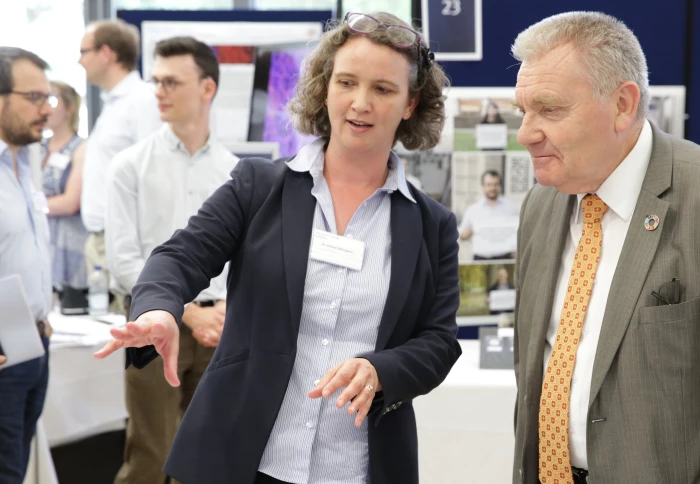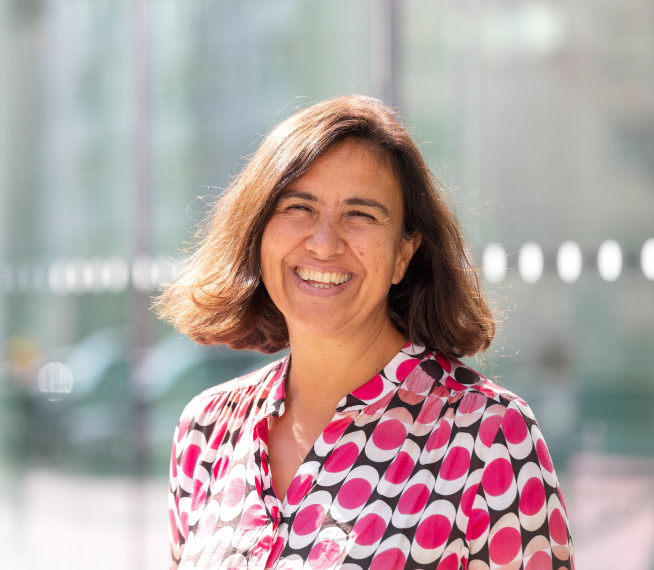Imperial joins ERC to celebrate 10,000 grantees


The European Research Council (ERC) will this week celebrate its 10,000th grantee - over 130 of them at Imperial.
The European Research Council (ERC) is this week celebrating its 10,000 grantee. It was created in 2007 to fund the best scientists for cutting-edge research in the top of their field across Europe.
At Imperial, funding from the ERC has played a significant role in supporting pioneering research in STEM, medicine and business and embedded our research community firmly in European science. Imperial has hosted over 130 ERC Grantees and over 148 ERC-funded projects, totalling over €203m. Our ERC booklet illustrates some of the impact ERC grants have had at Imperial.

Imperial researchers continue to contribute to the European science agenda. The most recent Imperial grantee Professor Francesca Toni was awarded an ERC Advanced Grant just last month. Her research will make artificial intelligence (AI) and its algorithms more explainable to people from different backgrounds. Professor Toni said: "My ERC-funded project aims to empower both scientists and non-scientists to benefit from data-driven artificial intelligence, making its algorithms less opaque, particularly targeting the areas of healthcare and law. The high international prestige of ERC funding will be instrumental in the future of my research.”
ERC grants offer a golden combination of substantial funding and complete research freedom - allowing research avenues to be quickly adapted such that emerging opportunities can be explored. Professor Aimee S Morgans Professor of Thermofluids
Professor Aimee Morgans won an ERC Starting Grant in 2013 and a Consolidator Grant in 2018 for her pioneering work on fluid mechanics aimed at making energy generation and transport more environmentally friendly. She is clear on how transformative ERC funding has been for her research: "ERC grants offer a golden combination of substantial funding and complete research freedom. Through Starting and Consolidator Grants, I have been able to pursue my dream of feeding fundamental research on acoustics, flows and flames into a state-of-the-art computational tool with industrial and societal impact. The timing of the grants has been transformative for my career, with the Starting Grant being awarded during my second maternity leave. One feature of the grants that I really appreciate is their freedom, allowing research avenues to be quickly adapted such that emerging opportunities can be explored."
Professor Irene Miguel-Aliaga has won ERC Starting and Advanced Grants to explore how our brains and guts communicate. Using fruit flies and mice, her research is pioneering understanding of the mechanisms by which organs sense and respond to change. She agrees on the importance of the ERC: "Continued ERC funding has provided both the long-term financial support and scientific freedom to take scientific risks, leading to entirely new findings. Our latest paper is the result of over seven years of work!”
ERC support has been essential in helping us to build an internationally recognised vibrant research activity. Professor Molly Stevens Professor of Biomedical Materials and Regenerative Medicine
Among the many Imperial ERC winners is also Professor Molly Stevens who has been supported throughout her career by the ERC and now leads a research group made up of academics from over 25 countries.
Together they use transformative bioengineering approaches that will overcome severe limitations in current materials in two main areas: Biosensing and Regenerative Medicine. Professor Stevens has been supported by a Starting Grant (2007); Proof of Concept (2011); Consolidator Grant (2013); Proof of Concept (2017) and Proof of Concept (2019). Professor Stevens said: "I am exceptionally grateful for the long-term support that the ERC has provided me with since the early days of starting my independent group. Its support has been essential in helping us to build an internationally recognised vibrant research activity."
Article text (excluding photos or graphics) © Imperial College London.
Photos and graphics subject to third party copyright used with permission or © Imperial College London.